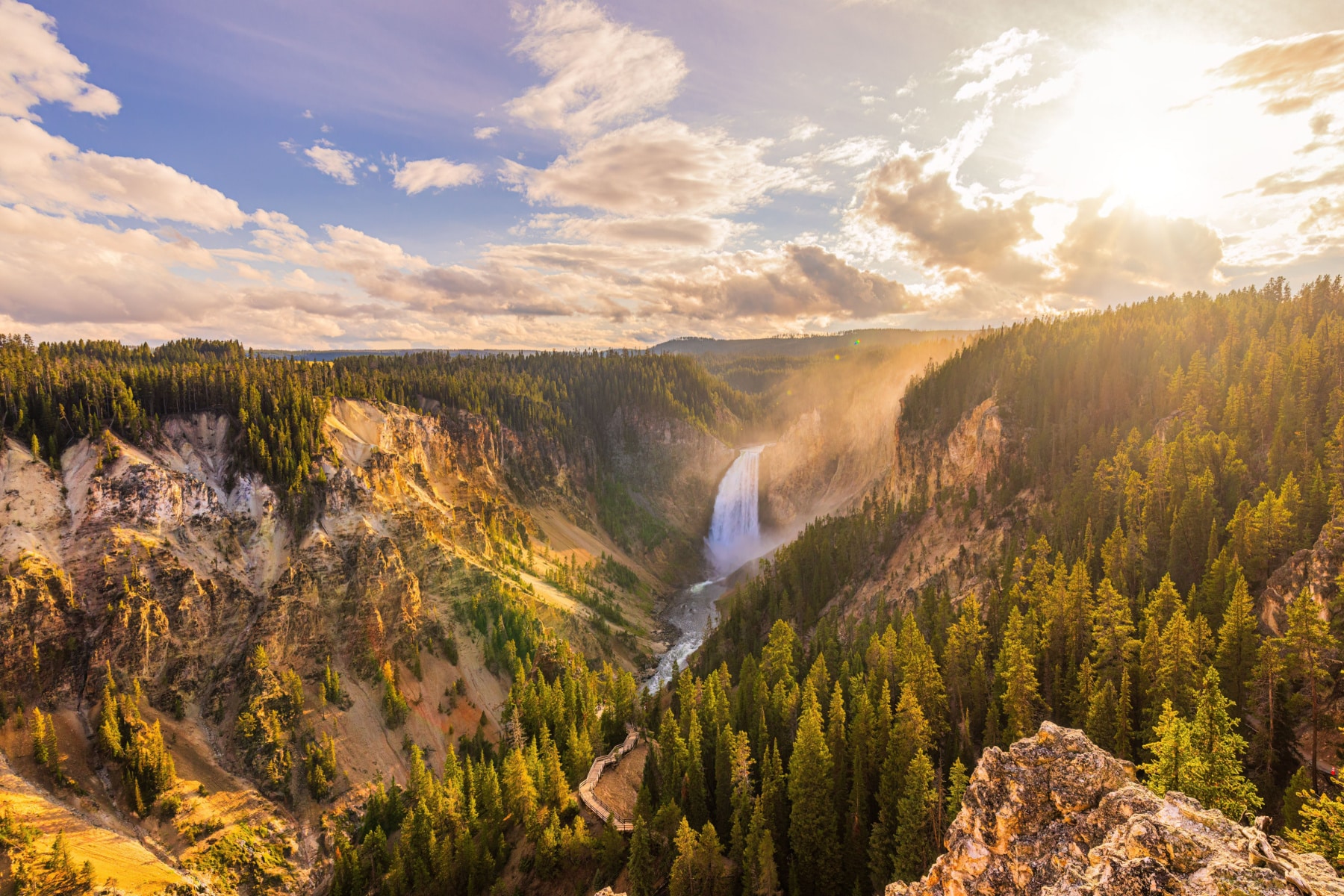
Article Overview: Best Hikes in Yellowstone
Choosing the best hikes in Yellowstone feels like I’m a bear in a berry field–there are no bad choices, and I want them all. However, we realize how intimidating it can be to find the perfect Yellowstone itinerary among hundreds of things to do in the park and surrounding communities.
While we’ve gathered a list of our favorites and mixed it with the public popular opinion, it helps to start with your own interest when seeing the park. Do you prefer to see more waterfalls than geysers? Are you inclined to find the highest incline in the park? Are you betting your friends that you’ll see a bear?
The biggest attractions and busiest trail sections are near:
- Old Faithful
- Grand Prismatic Spring
- Grand Canyon of the Yellowstone River
- Mammoth Hot Springs
- Norris Geyser Basin
- West Thumb Geyser Basin
- Lamar Valley
- Hayden Valley
- Yellowstone Lake
Choosing your hiking trails can also whittle down the places to stay in and around Yellowstone. Even with 2.2 million acres, the park traffic can be insufferable if you don’t time your trails right.
Pay special attention to restrictions that start at Yellowstone in the fall.
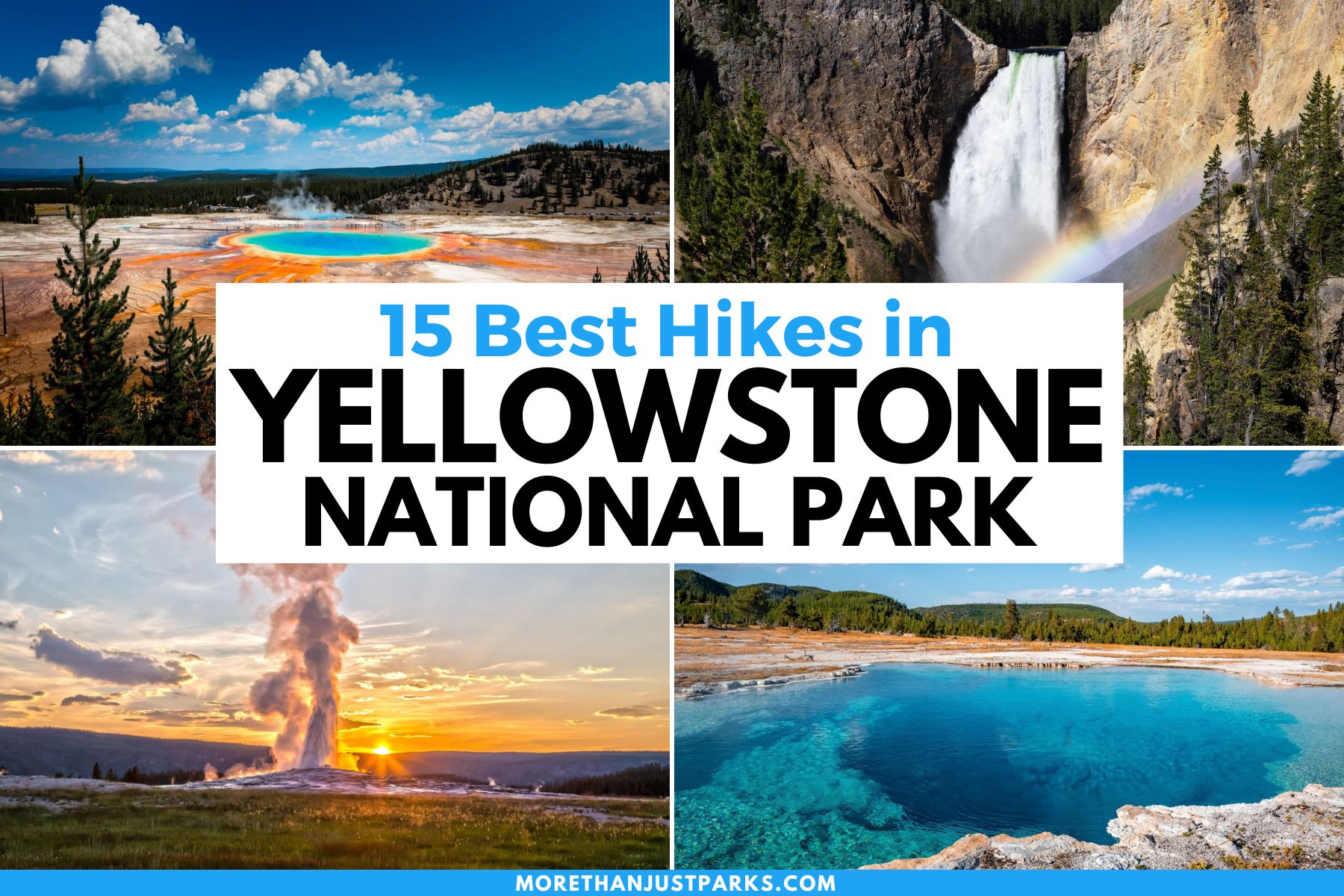
Best Hikes in Yellowstone National Park
Table of Contents: Best Hikes in Yellowstone
Table of contents: Best Hikes in Yellowstone
- Best Hikes in Yellowstone National Park
- 5 Quick Things to Know for Yellowstone National Park Hikes
- 15 Best Hikes in Yellowstone
- 15. Grand Prismatic Overlook Trail
- 14. Upper Geyser Basin
- 13. Dunraven Pass
- 12. Lone Star Geyser Trail
- 11. Lamar River Valley Trail
- 10. Point Sublime via Artist Point Trail
- 9. Avalanche Peak Trail
- 8. North Rim Trail
- 7. Brink of the Lower Falls Trail
- 6. Biscuit Basin Interpretive Trail
- 5. Bunsen Peak Trail
- 4. Trout Lake Loop
- 3. Canyon Rim South Trail
- 2. Little Firehole Loop to Mystic Falls and Fairy Creek
- 1. Fairy Falls Trail
- FAQ – Best Hikes in Yellowstone
- Map Of Best Hikes in Yellowstone
- Summary of Best Hikes in Yellowstone
- Pin Best Hikes in Yellowstone
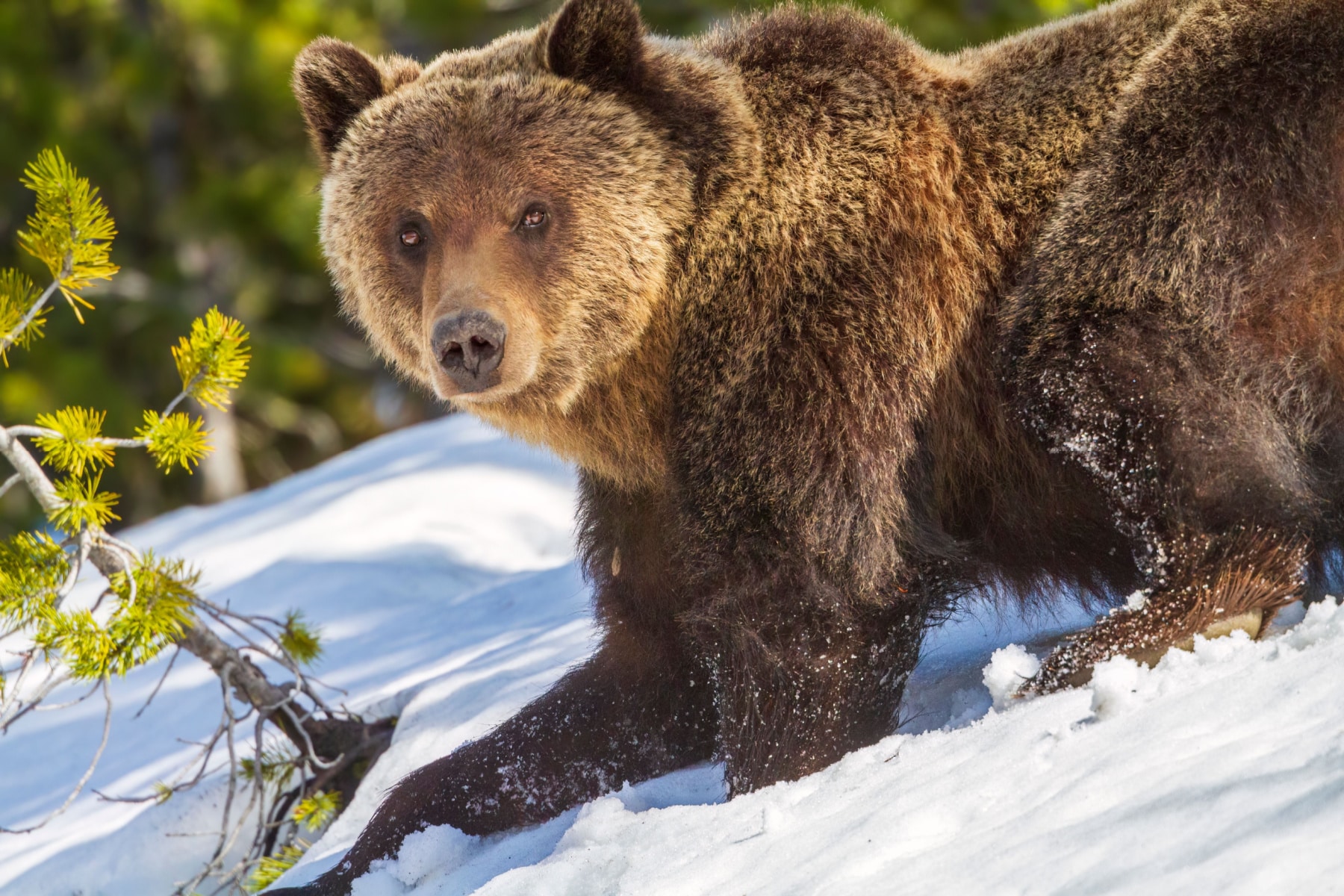
5 Quick Things to Know for Yellowstone National Park Hikes
- The entrance fee is $35 per vehicle, granting access for seven consecutive days. You can use the America the Beautiful Pass here, which is $80 and gets you access to more than 2,000 public lands for a year.
- Bring bear spray with you to Yellowstone. You’ll also want sunscreen and bug spray with your gear.
- We recommend taking a guidebook and or map of Yellowstone with you. Mobile service is spotty, and offline maps can be useless if the battery dies or a phone gets overheated.
- This is our favorite hotel in/around Yellowstone National Park. However, your Yellowstone lodging should be close to where you plan to explore on any given day. Several options are available in the park.
- Check park conditions before you make plans and then daily when you’re at the park. Closures and safety risks are updated often.
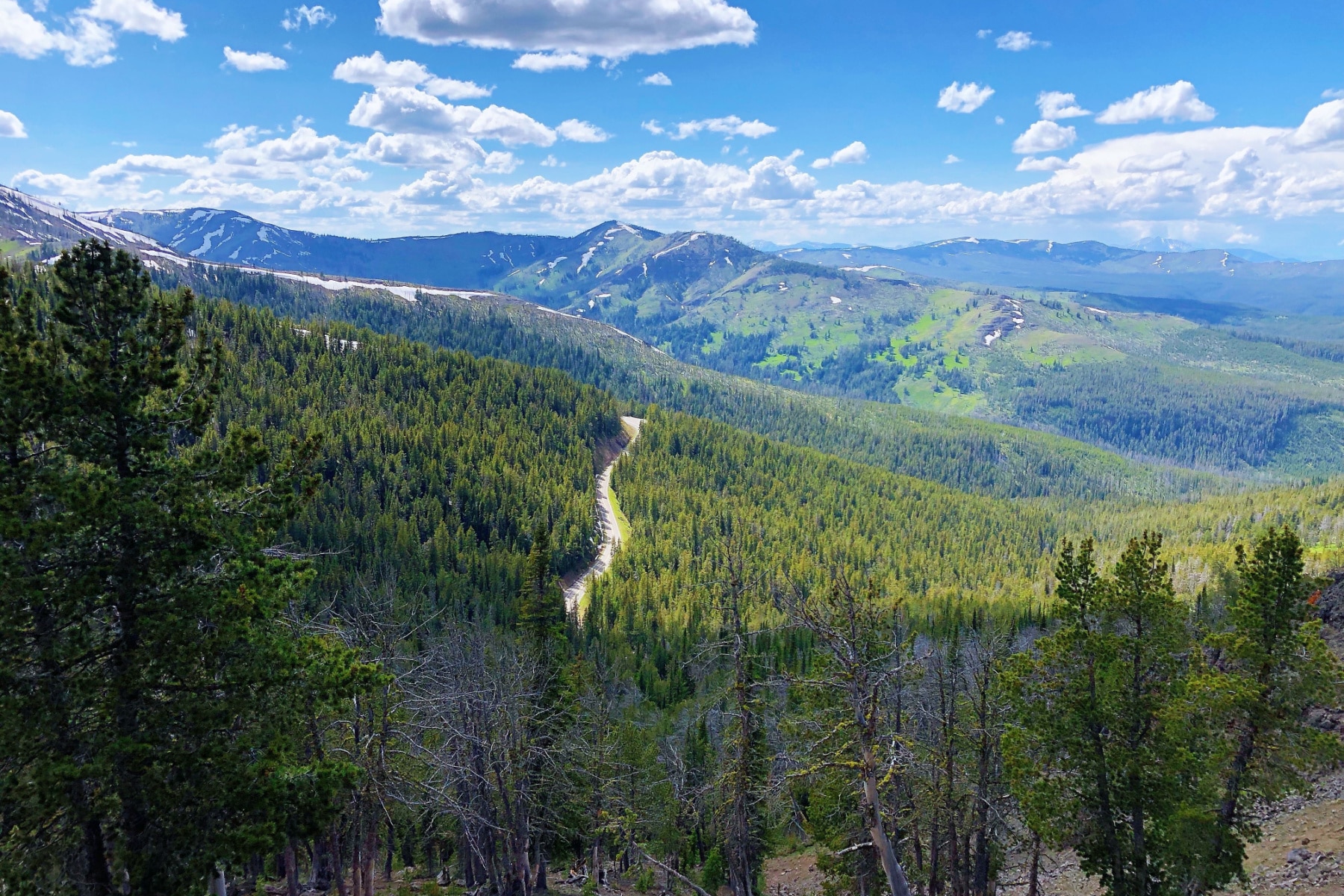
15 Best Hikes in Yellowstone
15. Grand Prismatic Overlook Trail
- Distance: 1.5 miles
- Difficulty: Easy
- Elevation Gain: 200 feet
- Time Required: 45 minutes

The Grand Prismatic Spring is one of the most notable, eye-catching spots in the whole park. You’ve no doubt seen photos of the multicolored hot spring. It’s photogenic and beautiful, and even the best pictures don’t do it justice.
This is one of the best hikes in Yellowstone for its spectacle and simplicity. Start from the Midway Geyser Basin parking lot. You will follow the dirt trail road until you get to a nice viewing platform. The platform gives you an elevated lookout at the spring, which is perfect for viewing. You can take the boardwalk for a closer view if you like.
There is a catch, though. This iconic spot tops almost everybody’s visit list. It will be crowded (unless you visit in the middle of the winter when several feet of snow are piled up). This kaleidoscope of colors brings one of the prettiest things you can see hiking in Yellowstone National Park, but it’s also the most crowded.

14. Upper Geyser Basin
- Distance: 4.9 miles
- Difficulty: Moderate
- Elevation Gain: 349 feet
- Time Required: 2 hours and 30 minutes
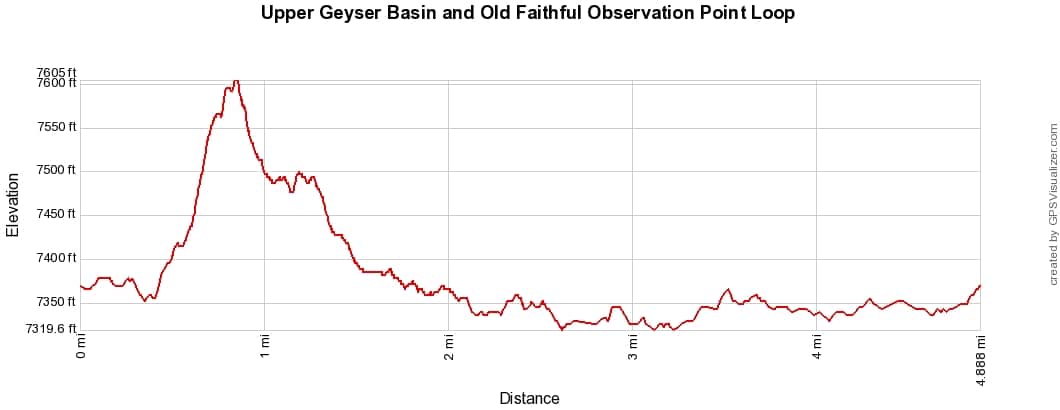
Upper Geyser Basin houses Old Faithful, a world-famous geyser. The people who aren’t at Grand Prismatic Spring are probably here.
The advantage of the Upper Geyser Basin trail is that you get to see a lot more than just Old Faithful. In fact, this is the best trail in Yellowstone (and actually the whole world) for exploring hydrothermal features. In addition to Old Faithful, you can check out Morning Glory Pool, Castle Geyser, and Riverside Geyser, to name a few.
Time your hikes as much as possible to coincide with the eruption predictions. The park website offers a list, but the ranger station will also have times posted when you arrive.
There are a few things to note. First, the full trail loop is roughly five miles, so you want good walking shoes and plenty of time. You don’t have to hike to see Old Faithful since it’s right by the parking area. Travelers looking to avoid the crowds should take the one-mile roundtrip hike to the observation point.
Secondly, Old Faithful is a little overrated. If you’re going to come this far, see more of the trail to explore hydrothermal features.
All of that considered it’s certainly worth your time if you want to fit it in, but there’s a lot more to Yellowstone. If you do want to check out this trail, you’ll start at the Old Faithful Visitor Center.
Lastly, Old Faithful is one of the few park sections open in the winter.
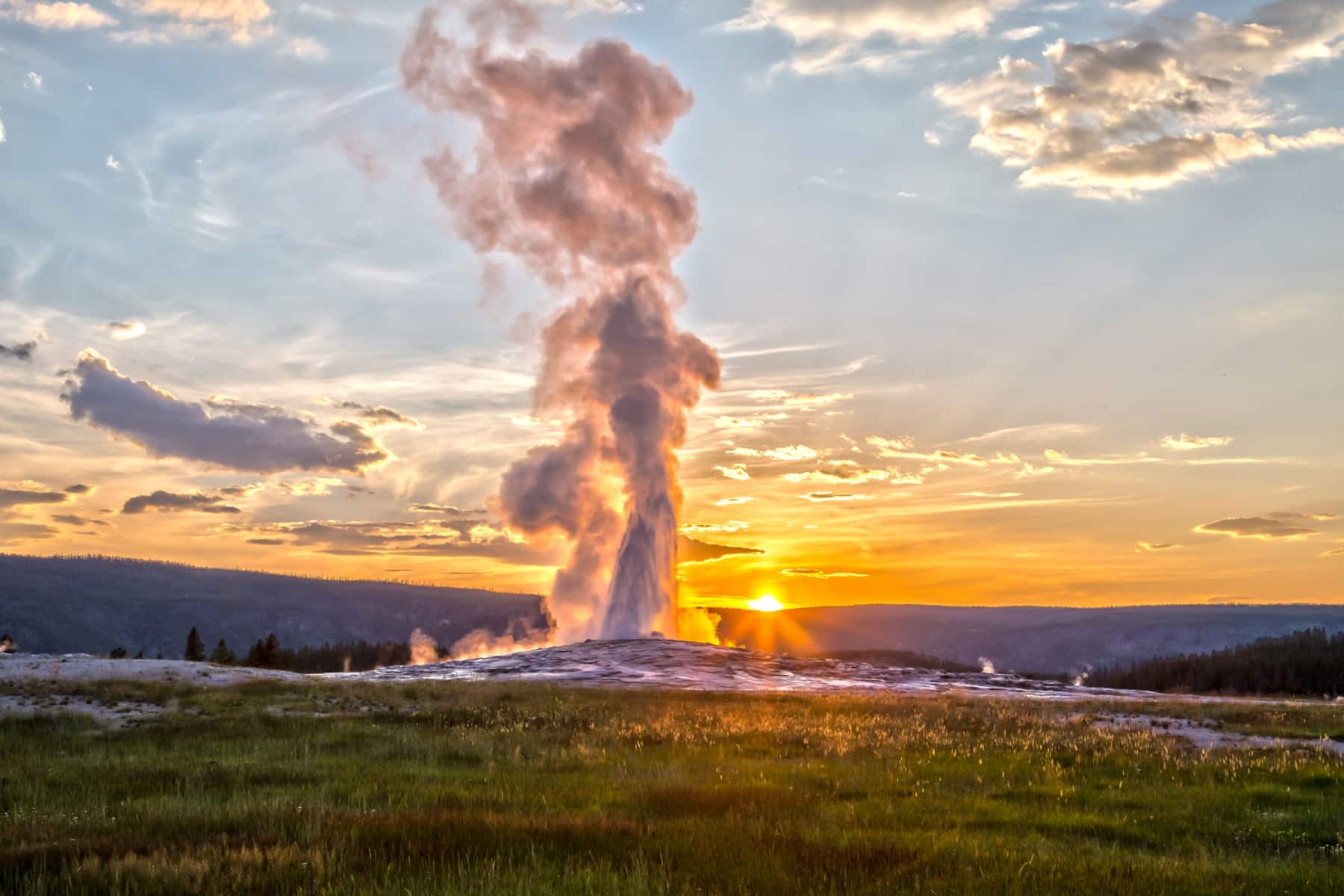
13. Dunraven Pass
- Distance: 6.8 miles
- Difficulty: Moderate to difficult
- Elevation Gain: 1,394 feet
- Time Required: 4 hours
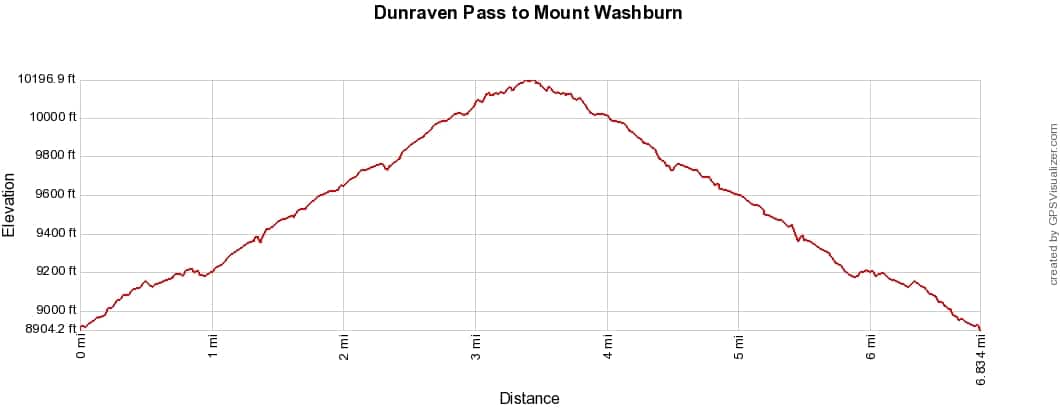
Dunraven Pass is by no means polarizing, but it will be one of your favorites or least favorites at Yellowstone, depending on a few things. If you like challenging hikes, getting up high, and summit views, you’ll absolutely adore this hike. The peak is above 10,000 feet, and you’ll get to soak in spectacular panoramas.
But the peak is above 10,000 feet. That means there is a risk of altitude sickness, and what would normally be a moderately challenging hike can get quite difficult in the thin air.
If you want to take on one of the more adventurous best hikes in Yellowstone National Park, you start at the Dunraven Pass Trailhead. You’ll find it on the Grand Loop Road.
The steep hike is on a consistently wide and stable trail. You don’t need any special mountaineering skills for this one. You will work up a sweat, but the views are beyond words. Also, the steepness of the hike does thin the crowds a bit. You’ll see other hikers on this trail, but it won’t be outright crowded.
Remember a few things for this trail. First, thunderstorms roll in pretty much every afternoon in the summer. Second, it can be cold and snowy any time of year, so bring all of your layers. Third, remember hiking safety. Don’t hike alone, and make sure someone knows your itinerary. Finally, bears. Lots of bears. Bear safety knowledge becomes critical on this trail.
A shorter route to Mount Washburn exists at Chittenden Road. You’ll shave a mile off the distance, but you’ll follow a service road instead of a traditional hiking trail. If the road is open to vehicles, you could potentially get as close as just 2.2 miles hiking to the summit.
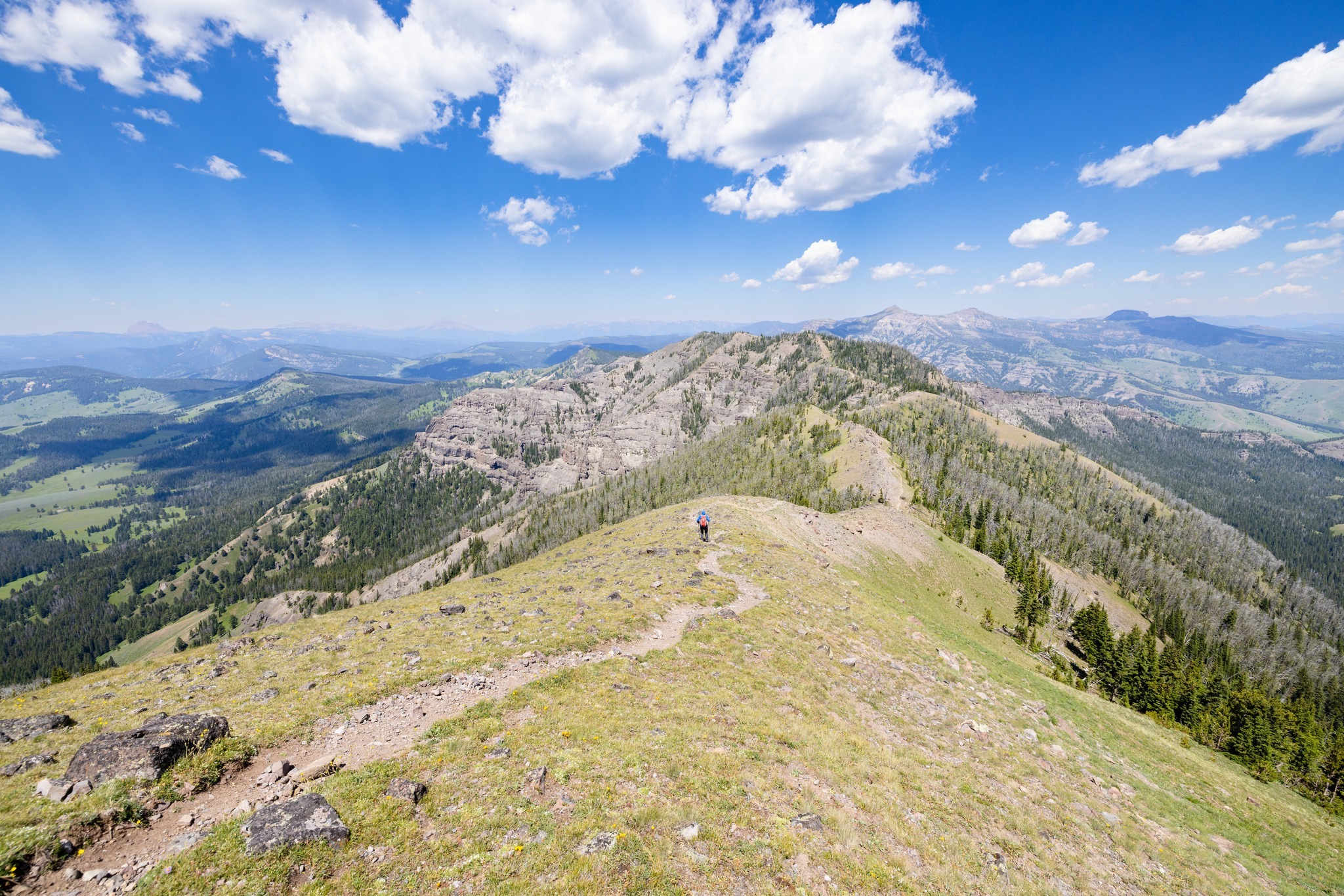
12. Lone Star Geyser Trail
- Distance: 5.3 miles
- Difficulty: Easy
- Elevation Gain: 127 feet
- Time Required: 2 hours and 30 minutes
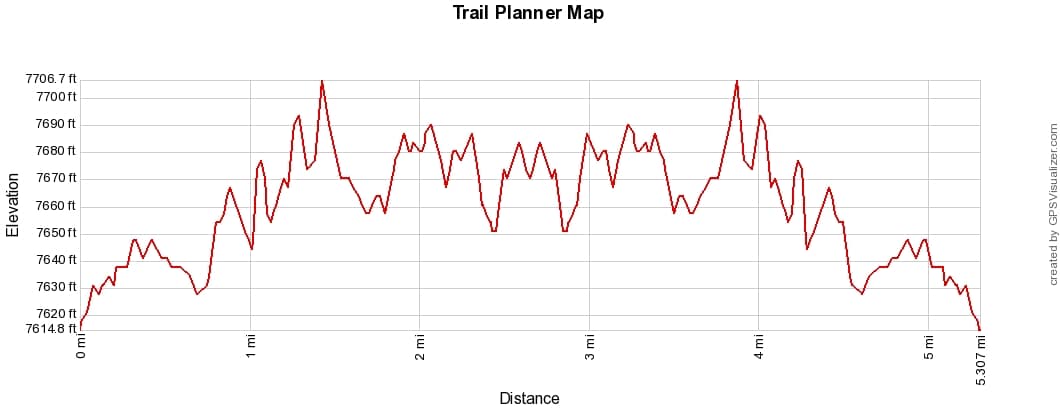
Lone Star Geyser is one of the most spectacular geyser sites, making it one of the best hikes in Yellowstone National Park. The eruptions are massive. The cone shape of the geyser is fascinating, and the surrounding area is surreal. On top of that, it’s well out of the most popular and crowded parts of Yellowstone, so you can enjoy your adventure in relative peace.
The trail is 5.3 miles round trip, but it’s pretty flat, and you can take your time. If you want to see an amazing geyser that many others miss, look for the Lone Star Trailhead. It’s on Grand Loop Road, a little south of Kepler Cascade.
Like most of the park, this trail is easiest to hike from June through October. At the end of a snowy winter, you can still see multiple feet of snowpack into late May. Plan accordingly.
Why isn’t this higher on the list? Well, Lone Star is not a frequent geyser. It only shoots once every three hours or so. The show is spectacular, but it’s difficult to time, so if you really want to see it, you might have to wait for a while.
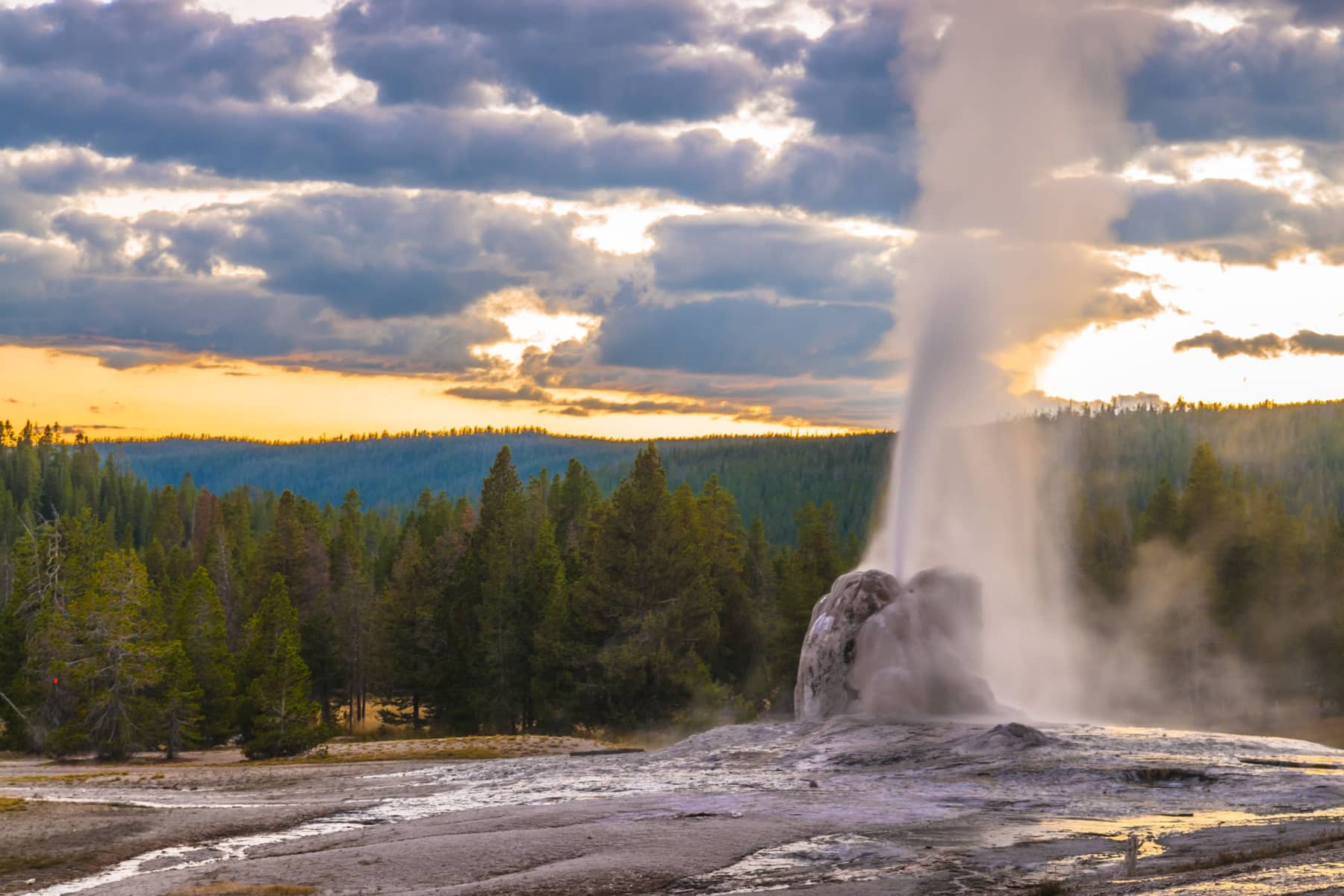
11. Lamar River Valley Trail
- Distance: 7 miles
- Difficulty: Moderate
- Elevation Gain: 300 feet
- Time Required: 3 hours
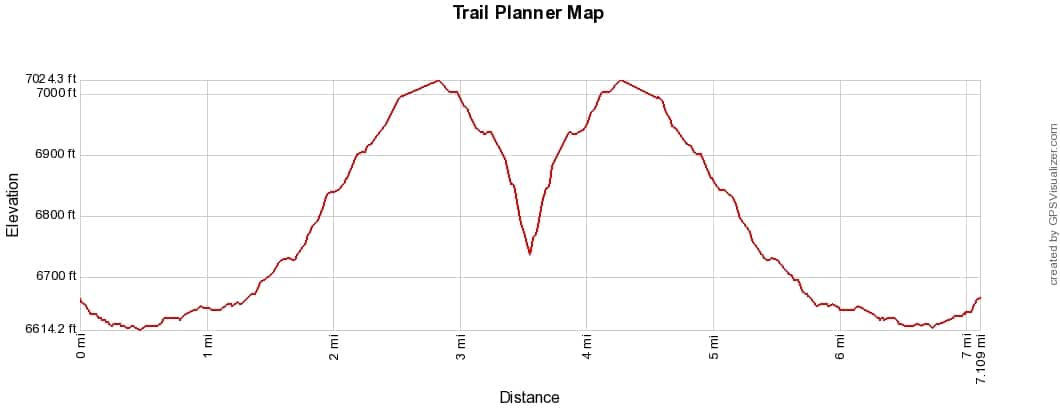
The Lamar River Valley is one of the best places to enjoy the floral beauty of Yellowstone. On top of that, it’s great for viewing wildlife. You will see all of the birds, and you can catch a glimpse of bison, bears, elk, wolves, moose, and more. There’s a reason this is a popular backpacking destination and one of the best hikes in Yellowstone.
When it comes to day hikes, the Lamar River Valley Trailhead starts at Soda Butte Creek. The hike isn’t brutal, but it is seven miles. It’s also not as clearly marked as many others, and you’ll have to cross streams and trudge through some mud.
If you do the whole trail, your shoes will get wet, so bring water shoes. Worst case scenario, you’ll have to back off the trail due to a raging river. Plan to visit after the 4th of July for the most manageable river crossing.
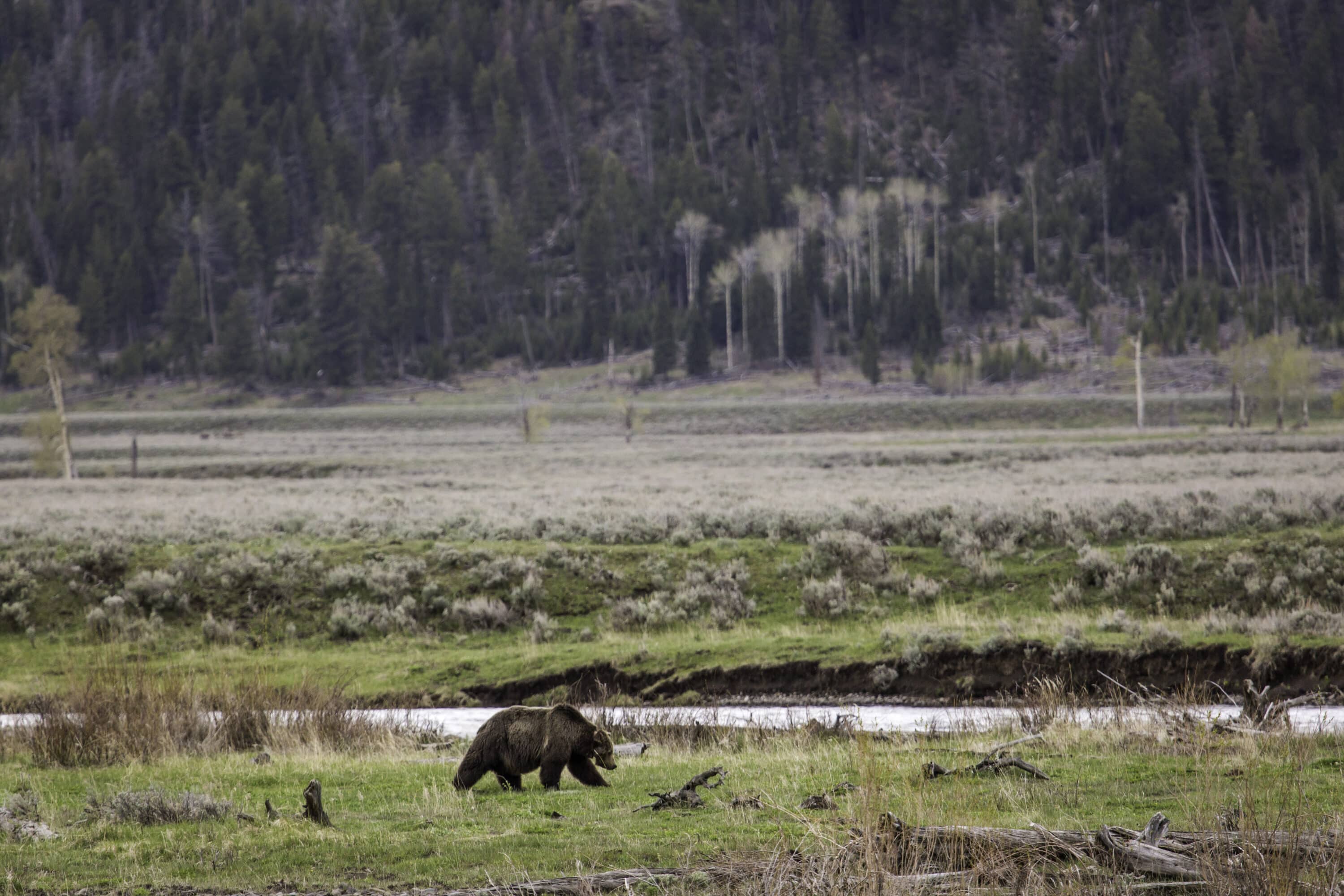
10. Point Sublime via Artist Point Trail
- Distance: 2.7 miles
- Difficulty: Moderate
- Elevation Gain: 341 feet
- Time Required: 1 hour and 30 minutes
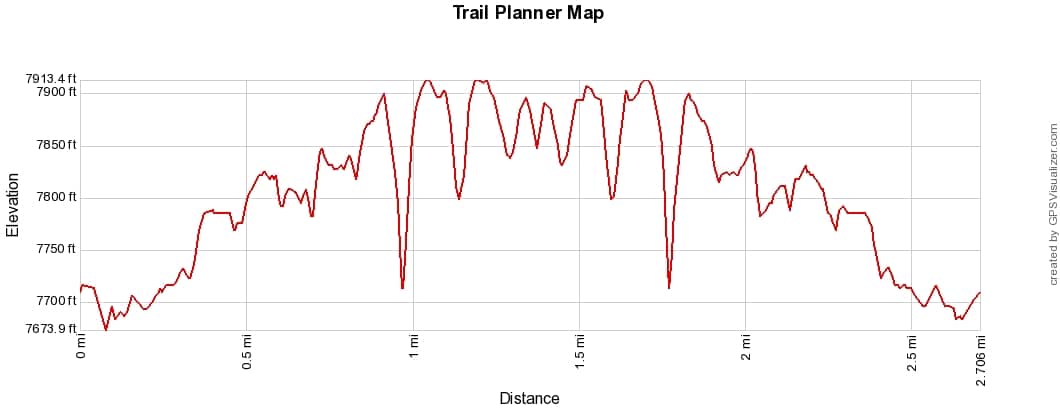
Artist Point Trail is a bit of a smorgasbord of things to enjoy, making it one of the best hikes in Yellowstone National Park. It follows the south canyon rim and culminates at Point Sublime. The trail isn’t terribly long, and it’s mostly flat, but you will have to do a little bit of uphill to get to the Point, and the very end of the trail consists of well-maintained stairs.
It’s completely worth it. Louder for the people in the back, “IT IS COMPLETELY WORTH IT!” You get canyon views, running water, greenery, and just about everything else Yellowstone has to offer.
For an accessible version of this hike, you can drive all the way to the Artist Point Overlook parking lot. From here to the point is about a five-minute walk, and it’s wheelchair accessible.
I have only done this trail once, in the morning, and the morning light in the canyon was spectacular. I highly recommend it.
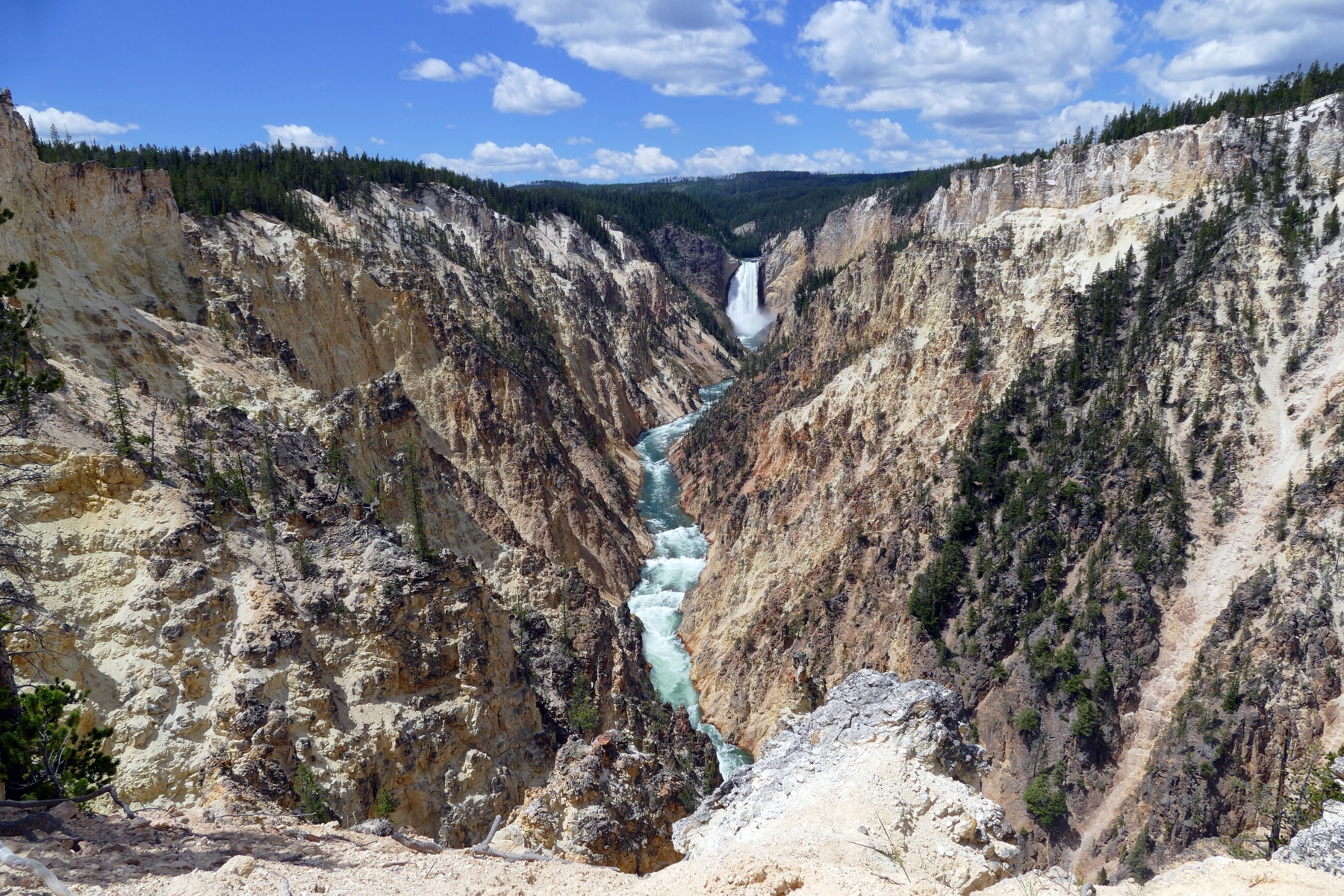
9. Avalanche Peak Trail
- Distance: 4.5 miles
- Difficulty: Strenuous and difficult
- Elevation Gain: 2,070 feet
- Time Required: 3 hours and 30 minutes
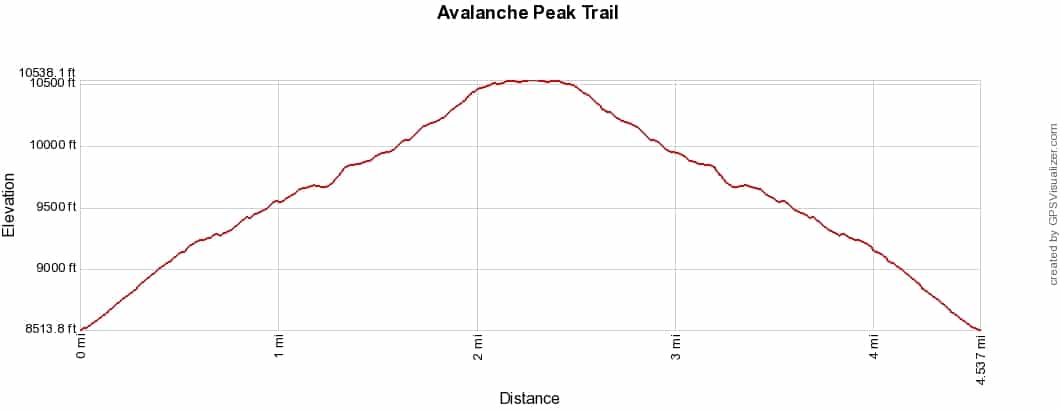
Avalanche Peak Trail is one of the best hikes in Yellowstone, but it’s a beast of an adventure. This strenuous summit hike takes you through more than 2,000 feet of elevation gain in just two miles. If you like that kind of thing (which I do), then this is as good as hikes get.
As a bonus, you get to see peaks and valleys the average Yellowstone tourist won’t see. In addition, it’s still a day hike that doesn’t require special gear.
This hike will make your legs burn, and you need to be in good shape to do it safely. You might also want trekking poles to take some of the strain off of your knees, especially on the way down. The trail is marked the whole way, but it can get a little thin and hard to find at points.
You can find the Avalanche Peak Trailhead just off of East Entrance Road. The trail starts at Yellowstone Lake, but pretty quickly, you climb up above everything and hit the summit that’s over 10,000 feet.
Also, you need to hit the trail early because the mountains of Yellowstone are riddled with thunderstorms in the afternoons. There’s a chance to hit snow throughout the year, so bring your layers and crampons.


8. North Rim Trail
- Distance: 6.4 miles
- Difficulty: Moderate
- Elevation Gain: 675 feet
- Time Required: 3 hours

The North Rim Trail takes you through the Grand Canyon of Yellowstone. That name gives you a pretty good idea of what to expect. This is one of the best hikes in Yellowstone for the waterfalls and viewpoints. You’ll get to see Grand View, Brink of the Upper Falls, and several other highlights.
The trail isn’t too challenging, but you’ll have more than 500 feet of elevation gain, and since it’s an out-and-back trial, you have to descend every step that you climb.
Despite that, the trail is easy to see, and you don’t have much risk of slipping on loose rocks.
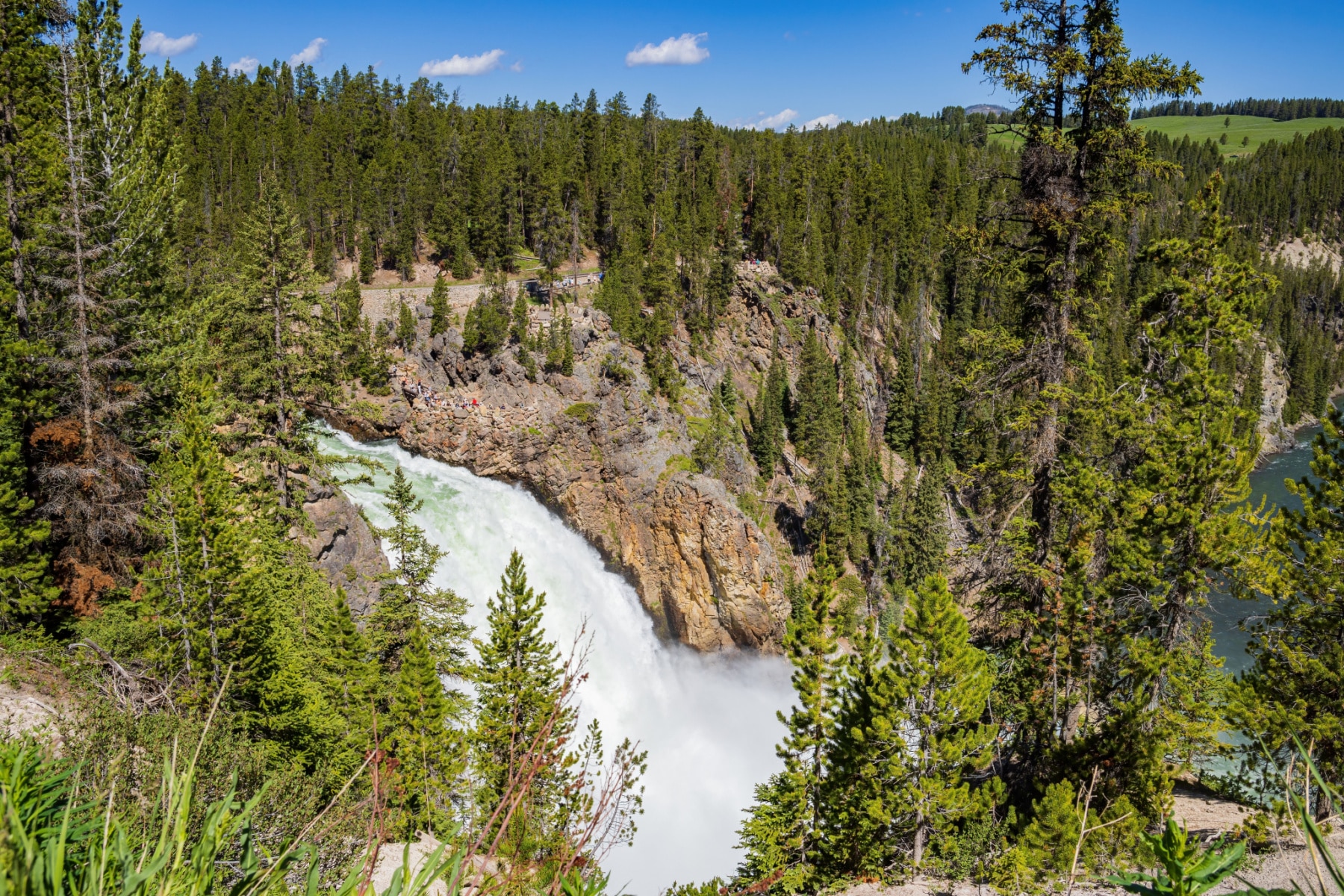
7. Brink of the Lower Falls Trail
- Distance: 0.7 miles
- Difficulty: Moderate
- Elevation Gain: 265 feet
- Time Required: 30 minutes
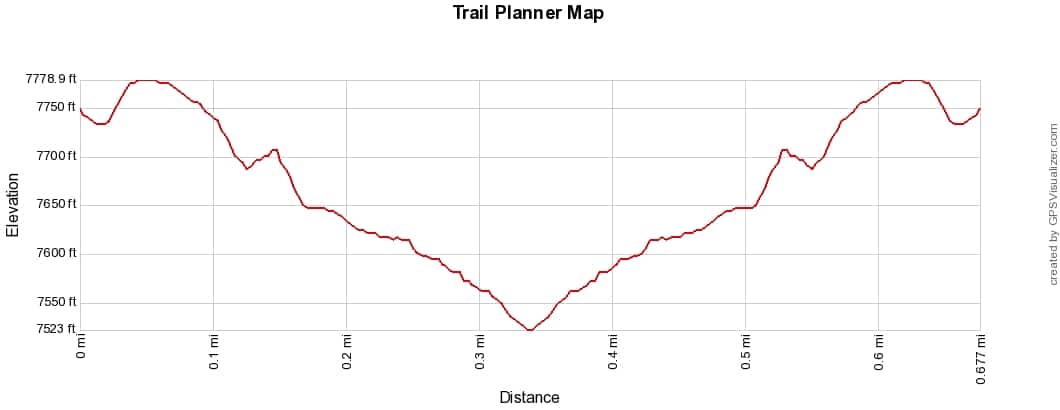
The North Rim Trail doesn’t quite cover this one extra highlight in the canyon. You can add this as a detour on the North Rim hike, or you can go to the Brink of the Lower Falls Parking Area and just do this shorter hike.
This is one of the best hikes in Yellowstone National Park and the largest waterfall in the park. Regardless of how you approach it, it’s well worth your time.
Most people can do this hike, but it’s a little more challenging than it might seem on paper. It only has 265 feet of elevation gain, but it does most of that in less than half a mile, which means you’ll be walking along surprisingly steep switchbacks.
This might be the best 30 minutes you can spend in Yellowstone.
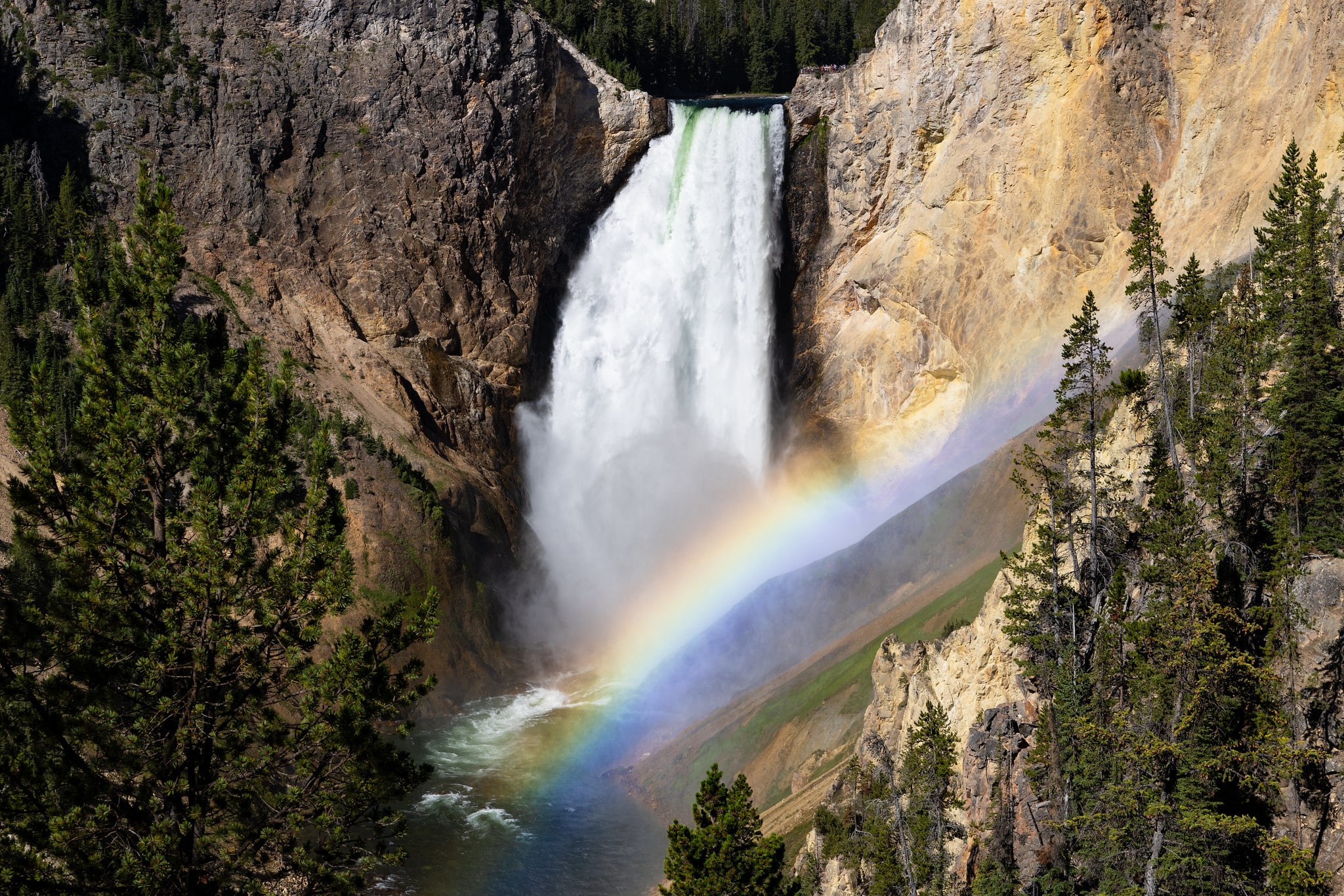
6. Biscuit Basin Interpretive Trail
- Distance: 0.7 miles
- Difficulty: Easy
- Elevation Gain: 26 feet
- Time Required: 20 minutes
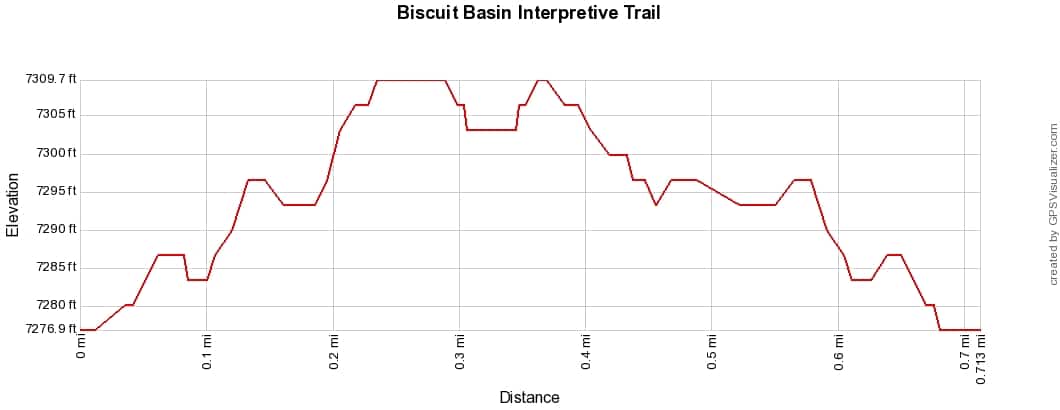
Another short hike, Biscuit Basin is one of the best hikes in Yellowstone for an easy outing that gives you a lot for your time and effort. Some hikes in Yellowstone National Park are better for wildlife while others are about land formations and plant life. This is both.
You get to see geysers and springs and the unique mud formations, not to mention a sapphire pool conveniently named Sapphire Pool.
Biscuit Basin is also probably the best place in the park for bird viewing. You can see a lot of other wildlife too. Best of all, it earns the title of the easiest hike on this list. If you were just hiking, you could do it in about 15 minutes, but stopping to enjoy the sights will add time to the trip.
You can also add this to the Upper Geyser Basin trail if you want to enjoy all of the notable geysers in the area. Doing so will give you a total hiking distance of close to six miles, but it’s all flat, easy terrain.

5. Bunsen Peak Trail
- Distance: 4.4 miles
- Difficulty: Moderate
- Elevation Gain: 1,282 feet
- Time Required: 3 hours
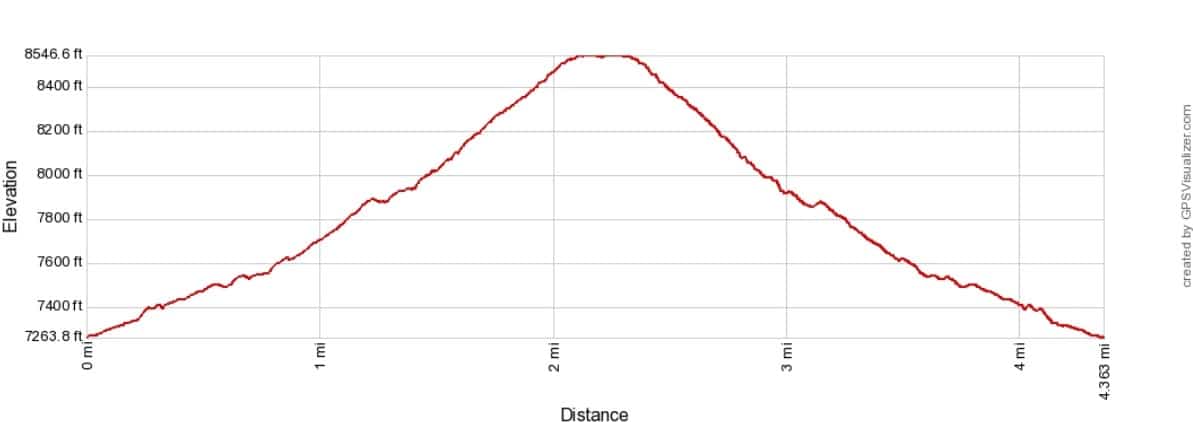
Bunsen Peak is one of the easiest summit hikes in Yellowstone National Park. It’s still a hike that’s going to work up a sweat, but it doesn’t require the same level of grit as some of the other summits. Despite being a shorter trail, it fully delivers on the views.
You will start at the Bunsen Peak Trailhead, and you will spend around three hours with your mouth hanging open in awe. The elevation gain means that you’ll go consistently uphill, but it’s not nearly as steep as other summits in the area.
The views are expansive and colorful. You have the chance to see every kind of wildlife that calls Yellowstone home. You’ll see other people, but it won’t be overly crowded. If you can only do one thing at Yellowstone, this is worth considering as that one thing.
The only reason this isn’t at the top of the list is because not everyone enjoys climbing mountains. Also, snowfall can make this completely inaccessible for many months out of the year.
All of that said, remember safety. Even though this trail is a little shorter and easier, it’s still a summit. Bring your layers, start early, give wild animals space, and make sure someone knows your itinerary.
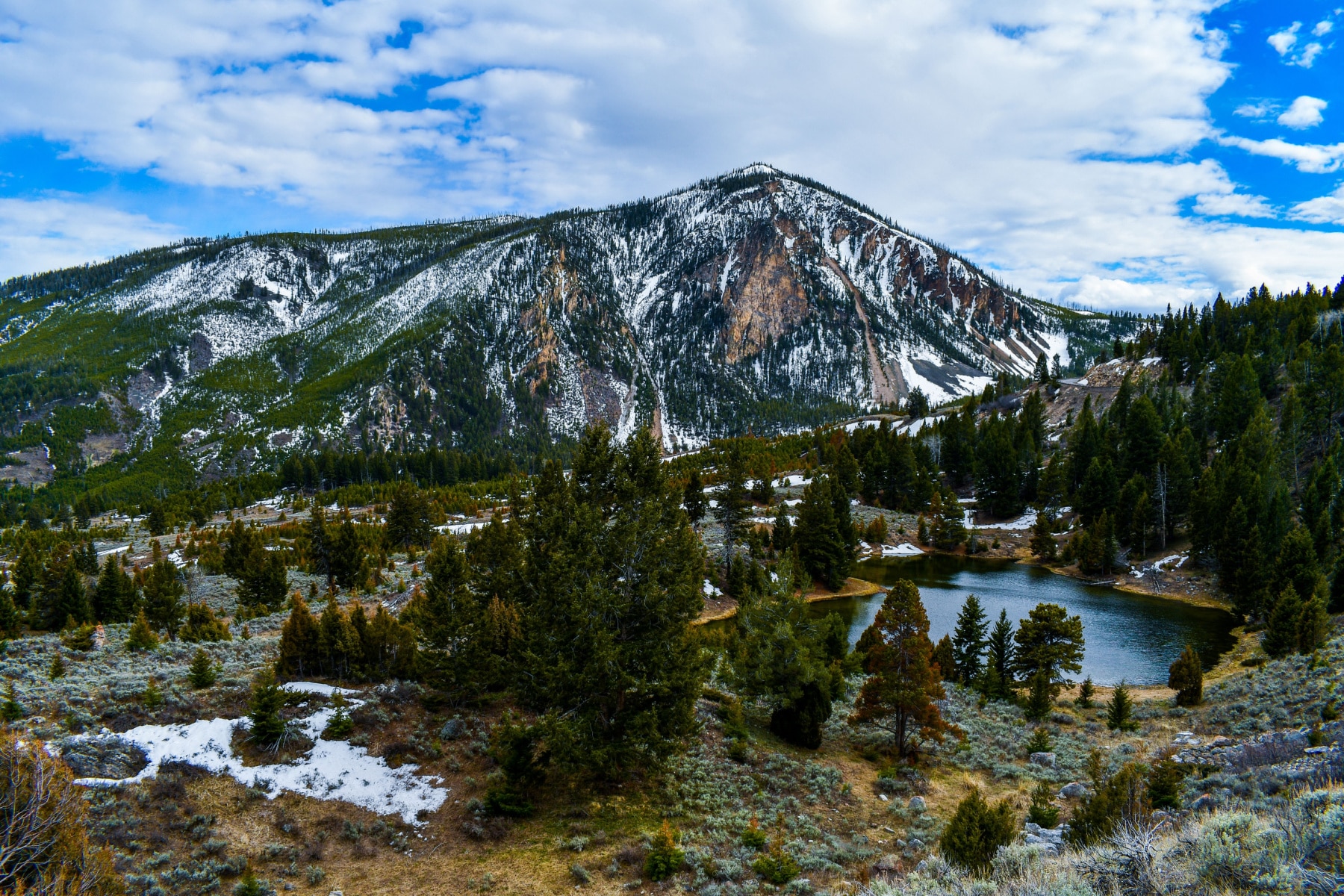
4. Trout Lake Loop
- Distance: 1.2 miles
- Difficulty: Easy
- Elevation Gain: 200 feet
- Time Required: 45 minutes
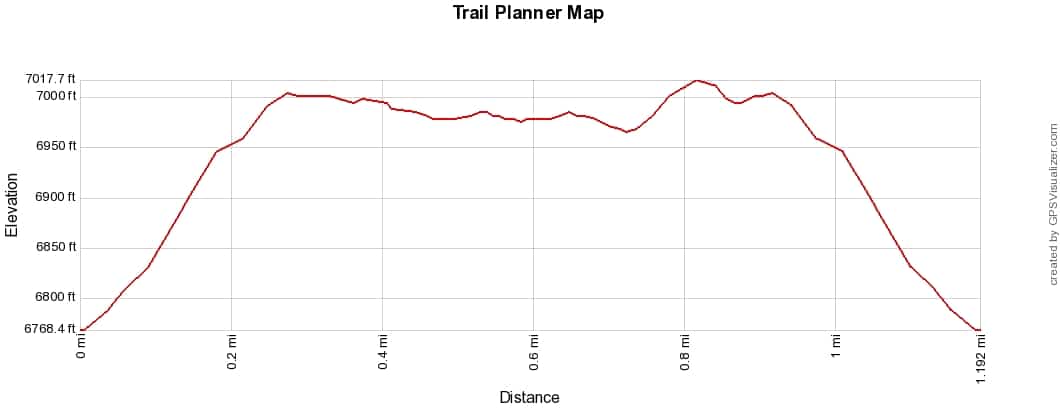
Trout Lake Loop is a classic best hike in Yellowstone favorite, and it still might be underrated. Definitely go in the summer, and you’ll see expanses of wildflowers around the lake. In the backdrop, you get forests and snow-capped mountains. All the while, you have a great chance to see tons of wildlife, including ospreys and otters.
As a bonus, the trail includes wide, flat, and easy-to-traverse paths. If you want to check out why it’s called Trout Lake, remember that you do need a special permit to do any fishing in the park. The fishing permit is exclusive to Yellowstone. A Montana, Idaho, or Wyoming fishing license will not suffice. Or, you can enjoy watching the trout in the clear water.
The Trout Lake Trailhead is a clearly marked spot where you can park in the Lamar Valley.
Words don’t do this hike justice. It’s stunning.
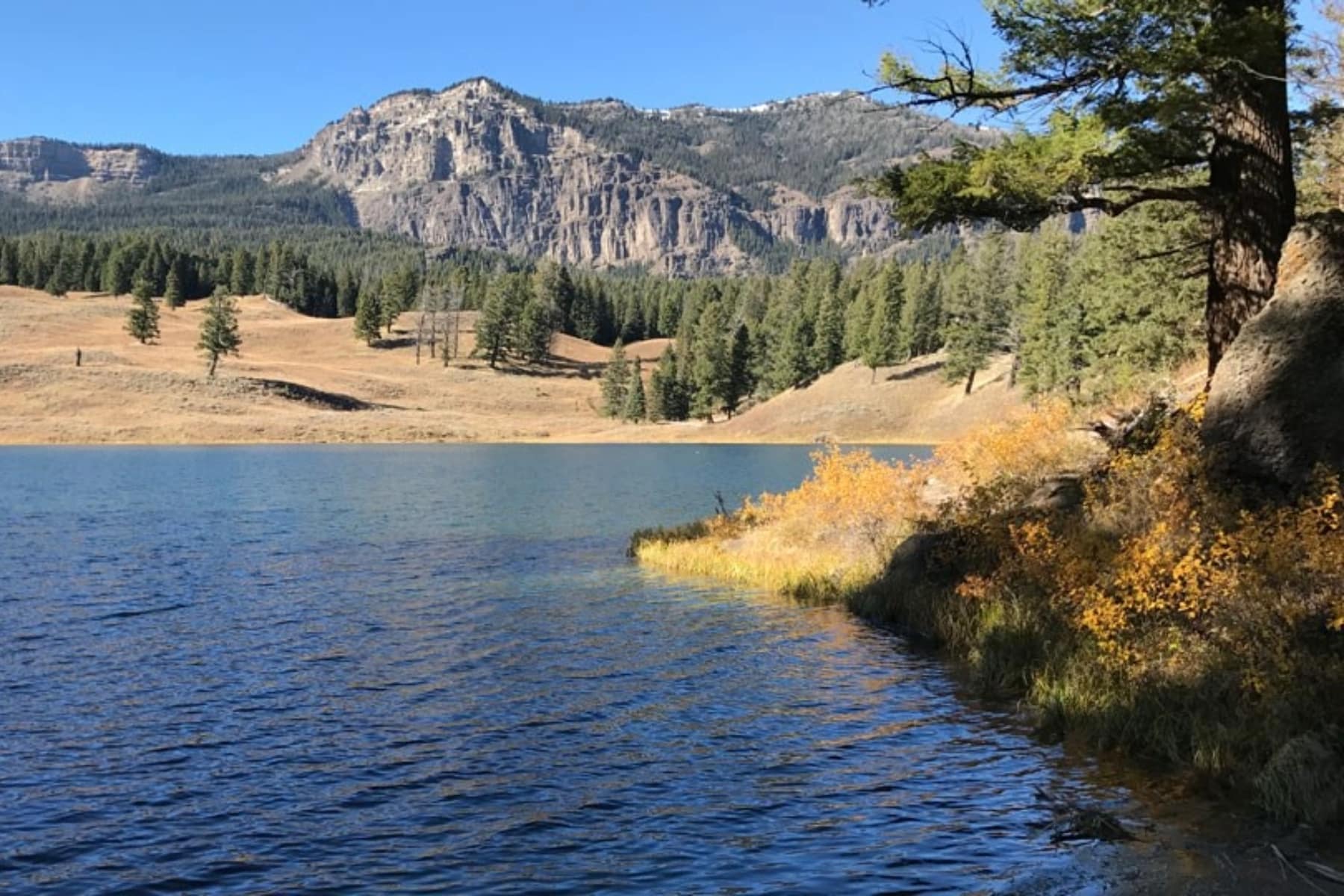
3. Canyon Rim South Trail
- Distance: 2.5 miles
- Difficulty: Moderate
- Elevation Gain: 278 feet
- Time Required: 1 hour

I’ve already mentioned a couple of hikes in the Grand Canyon of Yellowstone, and they’re great. This one gets the top 3 ranking of best hikes in Yellowstone because it’s a little more accessible and gets the best views of all.
It’s worth spending a whole day or even two exploring every inch of the canyon, but if you can’t, the South Trail stays on top of the canyon. This allows you to see a whole lot more of everything in a single hike. This trail is family-friendly, making it one of the best canyon hikes in Yellowstone National Park.
With little elevation change and a clearly marked, easy trail, you won’t struggle with this one. If you want a little more adventure, you can add a bunch of detours down into the canyon. You’ll see them from the trail.
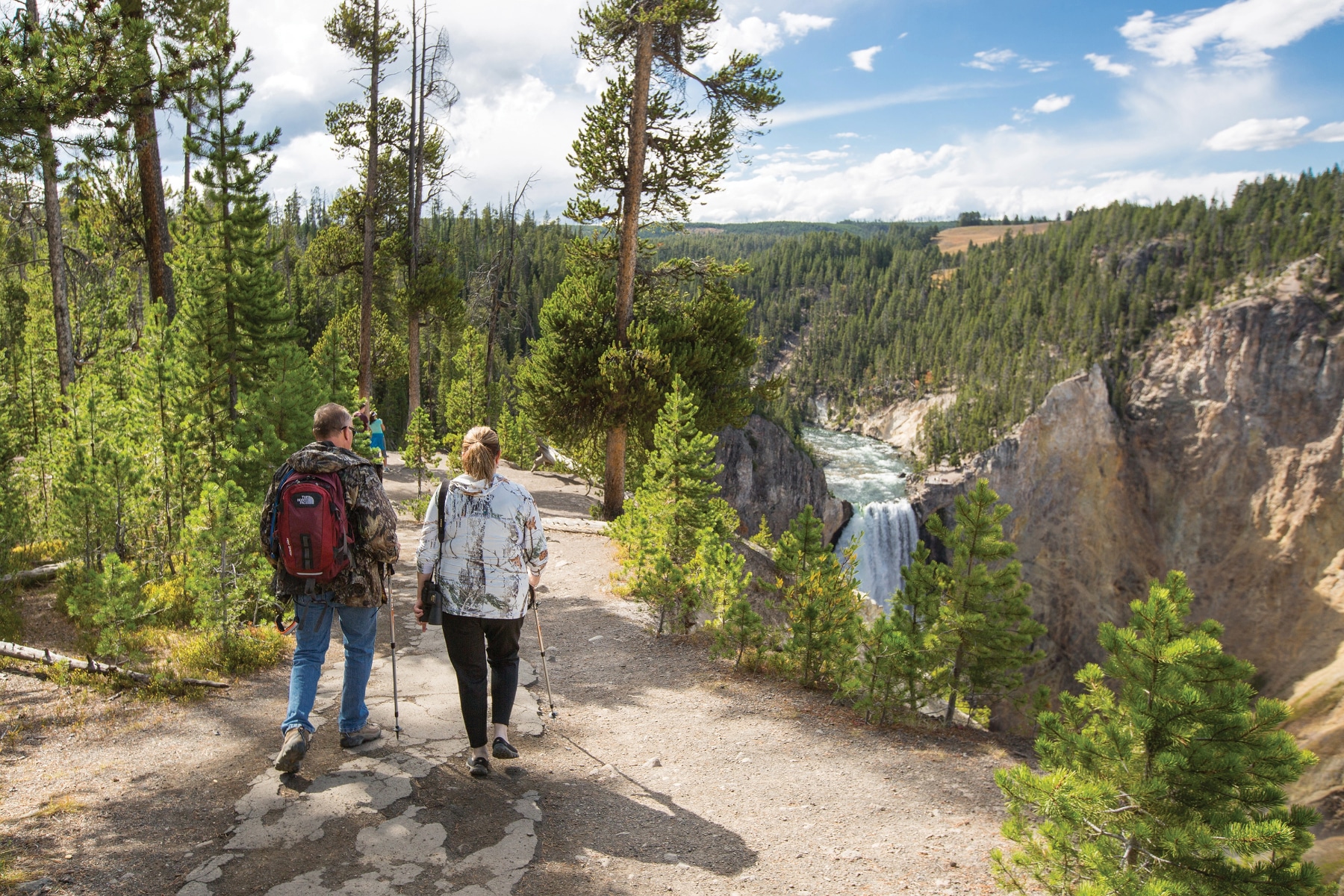
2. Little Firehole Loop to Mystic Falls and Fairy Creek
- Distance: 3.5 miles
- Difficulty: Moderate
- Elevation Gain: 606 feet
- Time Required: 1 hour and 30 minutes
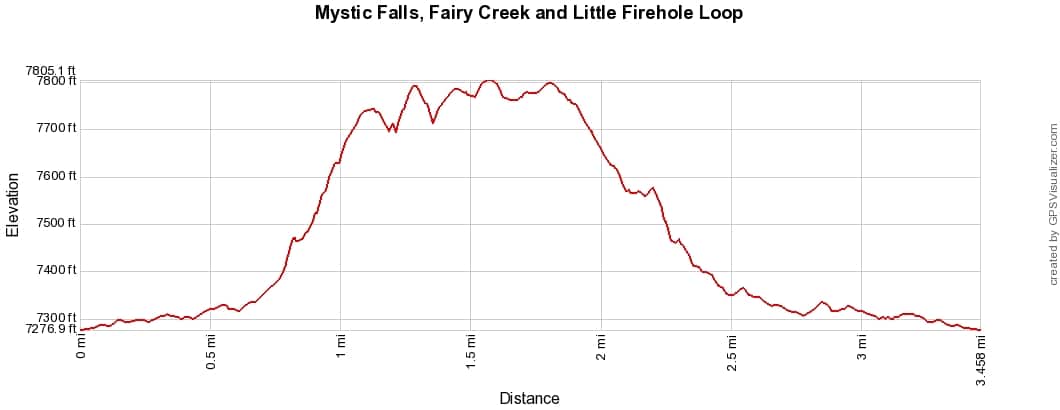
Mystic Falls is a top must-do for the best hikes in Yellowstone National Park. The falls are gorgeous and tucked away and feel like a special corner of the world. The Little Firehole Loop takes you to the falls, but it lets you see a lot of other stuff while you’re there.
Parts of the hike open up, and you get some grand views too. You can even see Old Faithful from here without soldering through the thick crowds closer to the geyser.
There’s just enough elevation gain that this is a moderate hike. If you want something easier and shorter, you can skip Fairy Creek and just enjoy the falls. That cuts about a mile out of the whole hike and saves you a few hundred feet of uphill (and downhill, as it’s an out-and-back hike).
This is a popular area. It’s not super crowded, but you won’t get to have this hike all to yourself. The one thing to remember is that it does experience seasonal closures that depend on weather and bear activity.

1. Fairy Falls Trail
- Distance: 4.8 miles
- Difficulty: Easy
- Elevation Gain: 170 feet
- Time Required: 2 hours
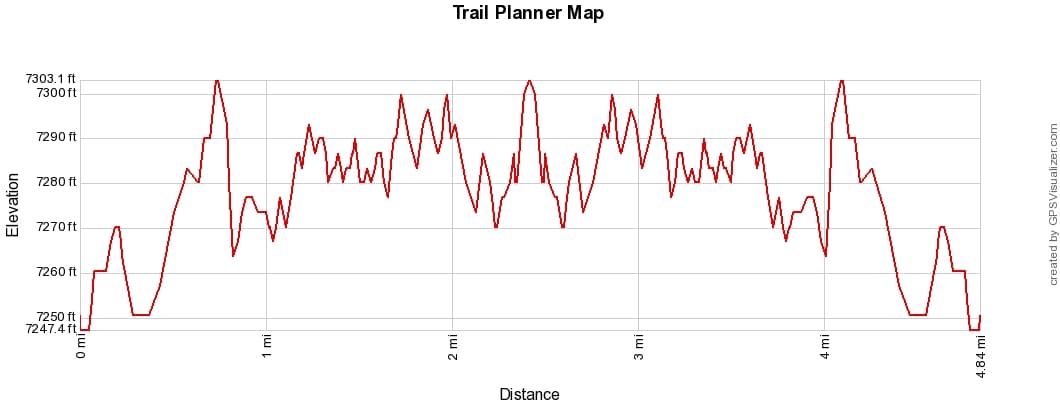
The first item on this list is the Grand Prismatic Spring. It’s the spot in Yellowstone, yet it came in last. The Fairy Falls Trail is the reason why, and it’s one of the best hikes in Yellowstone for waterfalls.
The Fairy Falls Trail runs right through the Grand Prismatic Spring Overlook. You get to see one of the most famous views in the whole park. Yes, you have to deal with the crowds, but it’s worth it.
Fairy Falls adds an element to that. Once you enjoy the Spring, keep on the trail, and you’ll get to Fairy Falls. It’s a spectacular 200-foot waterfall that caps an already amazing hike, and it’s significantly less crowded than the Spring Overlook.
This combination hike is accessible and doable for most people and families. Much of the trail is boardwalk until you get into the forested section, but that’s still gentle, easy hiking. If you only ever do one thing at Yellowstone, this should probably be it.


FAQ – Best Hikes in Yellowstone
That would be the Mount Washburn trail. A mix of elevation, wildlife risks, and weather concerns make an already strenuous trail that much more stressful. Of course, it’s also one of the most EPIC hikes in the entire park system. The trail is subject to closure in the fall due to bear activity.
Hiking alone is strongly discouraged. In fact, hiking in pairs is also frowned upon. Ideally, you’ll hike in teams of three. That’s for a slew of safety reasons, but most importantly, to have a strong front against wildlife run-ins on the trails. Yellowstone officials tell us that 91% of all bear attacks happened to people hiking alone or in pairs. If you are traveling alone, be sure to hike in cadence with a larger group.
Yes. You should bring your own bear spray or purchase a container at the park. Be sure to wear the spray in an easily accessible place. Of course, a bear isn’t going to wait to square up with you until you dig a canister out of your backpack. Lower the risk by using bear-proof food containers, too.
Yes. Watch this video, and you’ll see for yourself. By the way, that noise you hear is the “bugling” of an elk bull during the rut (mating season).
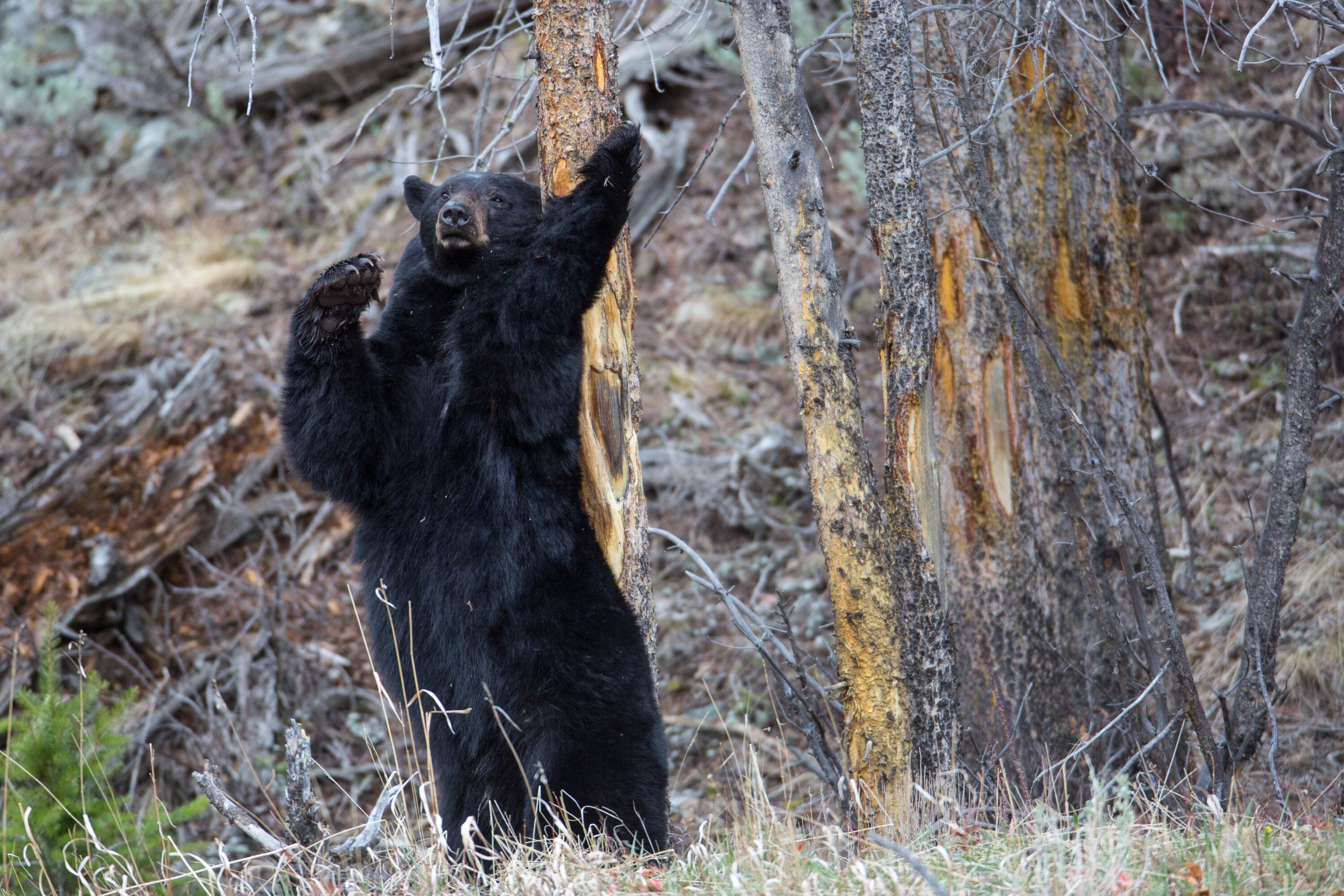
Map Of Best Hikes in Yellowstone
Summary of Best Hikes in Yellowstone
- Fairy Falls Trail
- Little Firehole Loop to Mystic Falls and Fairy Creek
- Canyon Rim South Trail
- Trout Lake Loop
- Bunsen Peak Trail
- Biscuit Basin Interpretive Trail
- Brink of the Lower Falls Trail
- North Rim Trail
- Avalanche Peak Trail
- Artist Point Trail
- Lamar River Valley to Cache Creek
- Lone Star Geyser Trail
- Dunraven Pass
- Upper Geyser Basin
- Grand Prismatic Overlook Trail
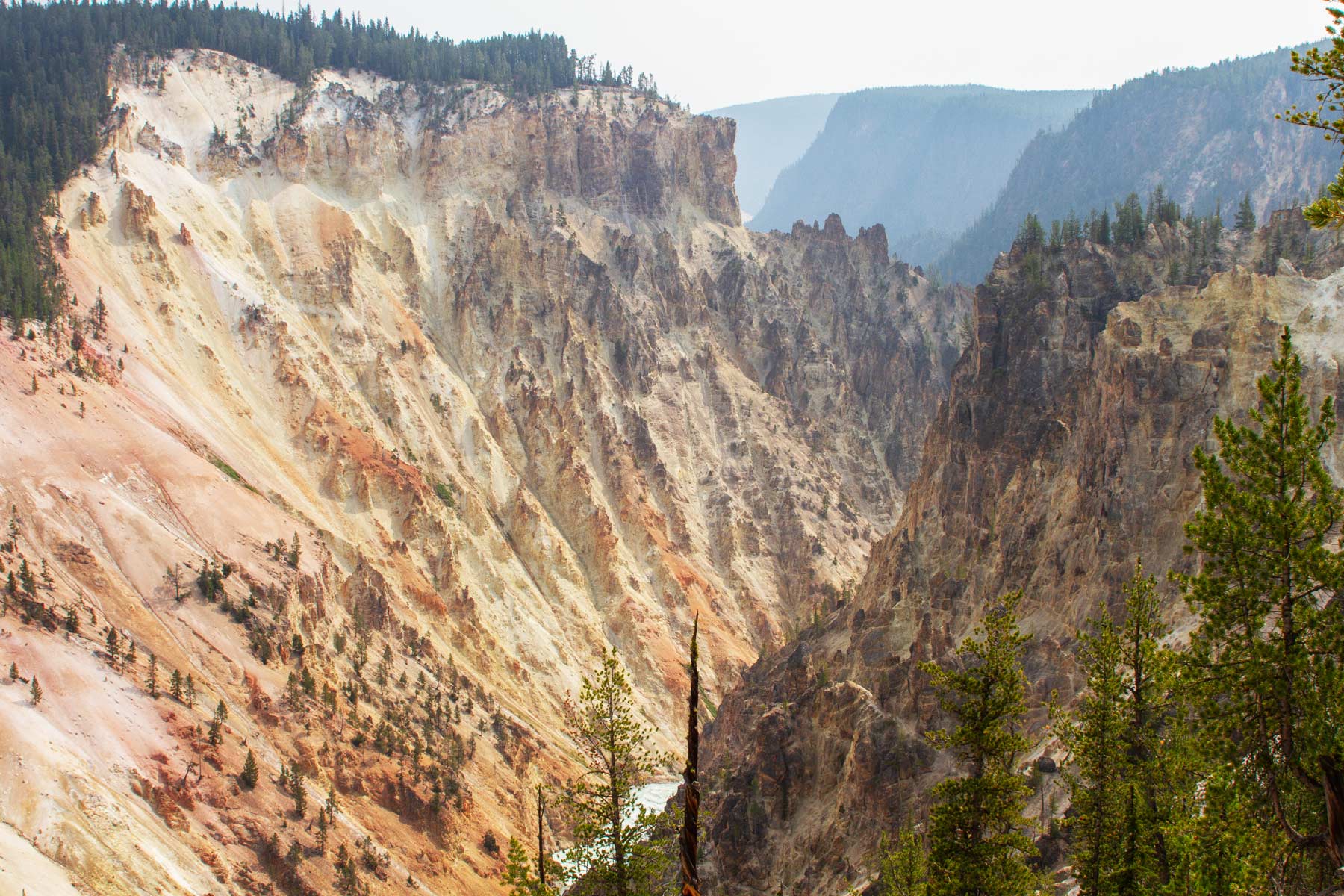
Pin Best Hikes in Yellowstone

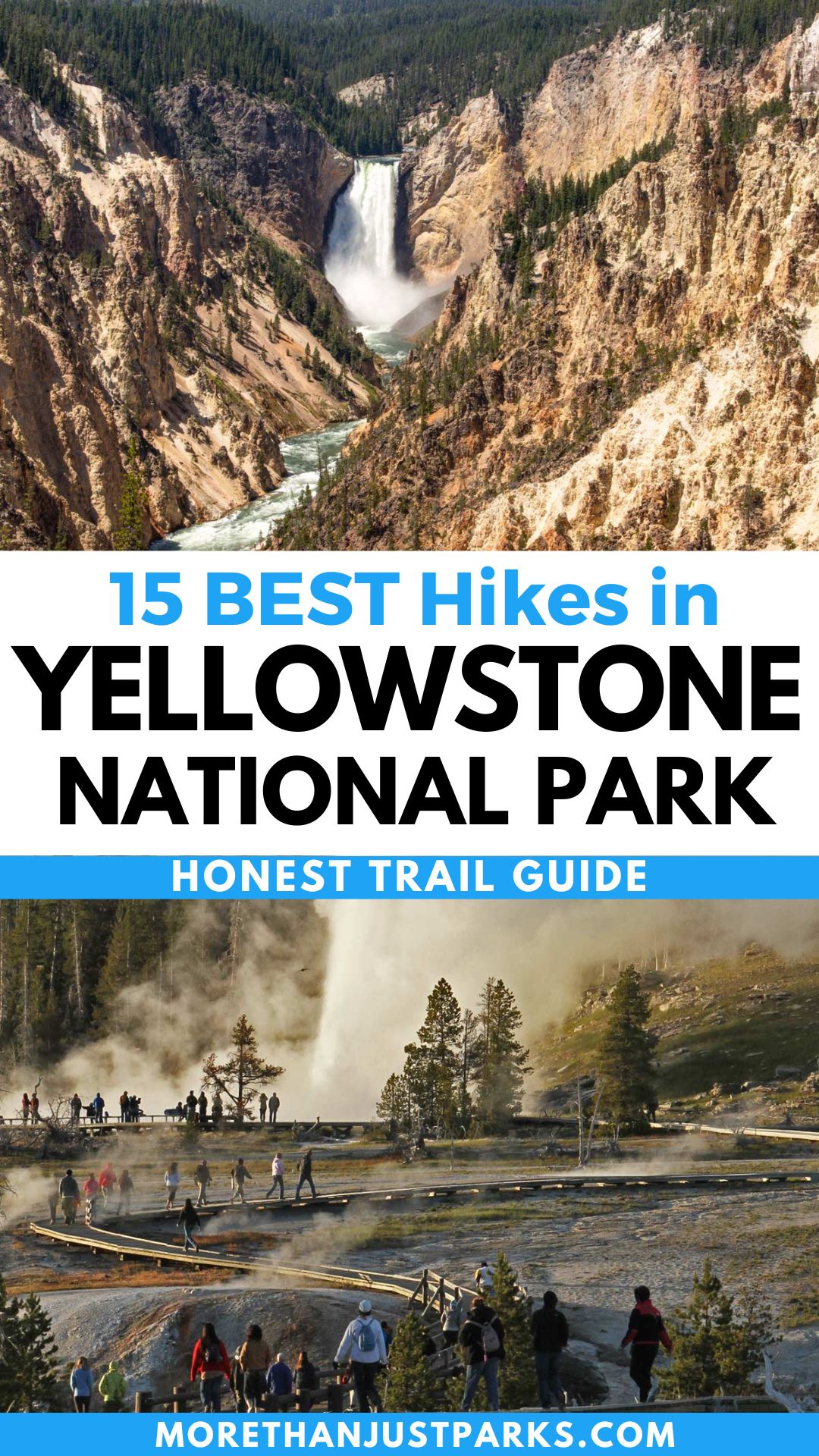
Helpful Related Links
Yellowstone’s Secrets Revealed: 18 (FASCINATING) Yellowstone National Park Facts You Probably Didn’t Realize
Things to Do Yellowstone: 15 Best Things to Do Yellowstone National Park
Best Airports Near Yellowstone: The Best Airports Near Yellowstone National Park
The Wyoming National Parks: 10 Epic Wyoming National Parks: The Complete Guide (+ Photos)
Mount Rushmore to Yellowstone: Driving Mount Rushmore to Yellowstone National Park Road Trip
Grand Teton Hikes: 18 Epic Grand Teton National Park Hikes (Photos + Guide)
Grand Teton Guide: Grand Teton National Park Ultimate Guide
Things to Do Grand Teton: 17 Epic Things to Do Grand Teton National Park
Grand Teton Maps: The Best Maps for Grand Teton National Park
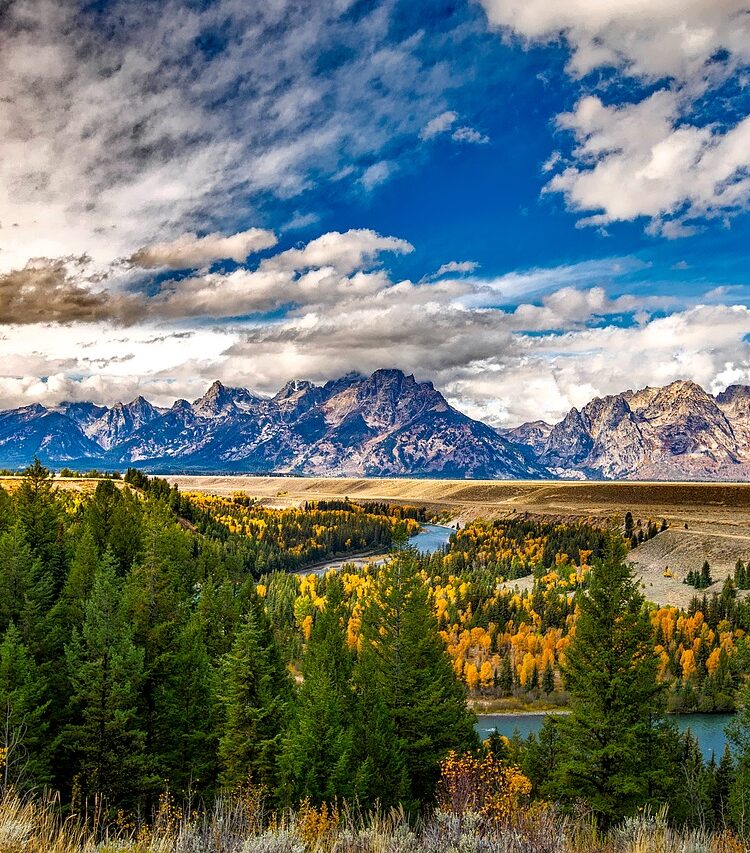

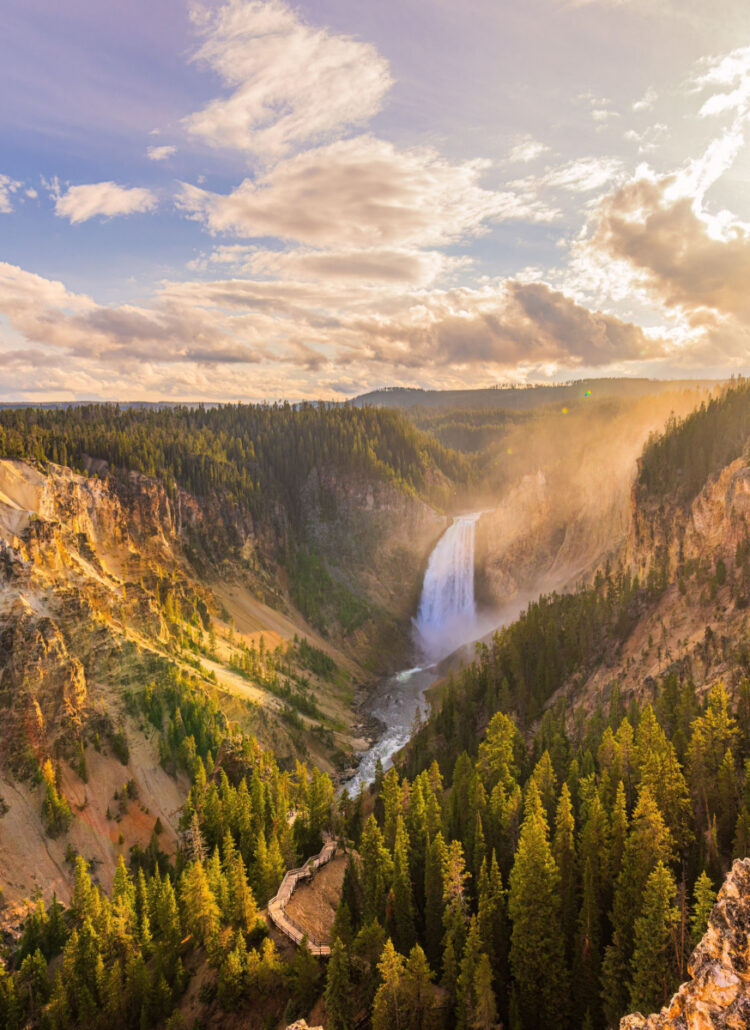
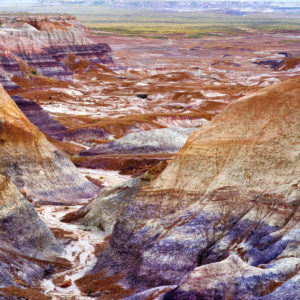

Leave a Reply